Table of Contents
Introduction: freedom of movement with yoga for cervical spondylosis
In the modern age, where technology and sedentary lifestyles have become the norm, the prevalence of cervical spondylosis has seen a significant rise. This condition, characterized by degeneration of the spinal discs and joints in the neck, often leads to pain, stiffness, and reduced mobility.
While medical interventions play a crucial role in managing cervical spondylosis, an increasingly popular and holistic approach to alleviate its symptoms and improve the quality of life is the practice of yoga.
Yoga, an ancient discipline that harmonizes the body, mind, and spirit, offers a unique avenue for those grappling with cervical spondylosis. Through a combination of gentle stretches, postures, breathing techniques, and mindfulness, individuals can gradually regain freedom of movement and find relief from the discomfort caused by this degenerative condition.
Understanding Cervical Spondylosis and Its Impact on Our Daily Lives

Cervical spondylosis, a common degenerative condition affecting the cervical spine in the neck, has the potential to significantly impact our daily lives. As we navigate the demands of modern living, it becomes increasingly important to comprehend the nature of this ailment and the ways in which it can influence our overall well-being.
This condition, also known as cervical osteoarthritis or neck arthritis, arises from the wear and tear of the spinal discs and joints in the neck region.
Over time, the intervertebral discs can thin out, the cartilage can deteriorate, and bony growths, called osteophytes, may develop. These changes can lead to a range of symptoms that affect our physical, emotional, and even cognitive realms.
Physically, cervical spondylosis can manifest as neck pain, stiffness, and reduced range of motion. Everyday activities such as turning the head, bending, and even sitting for prolonged periods can become uncomfortable or challenging.
The pain might radiate to the shoulders, arms, and even fingers, impacting our ability to perform routine tasks with ease.
Gentle Stretches and Soothing Postures for Neck Pain
here are some gentle stretches and soothing postures for neck health, presented in bullet points for easy reference:
Stretches:
Neck Tilt

Gently tilt your head to one side, bringing your ear towards your shoulder. Hold for 15-20 seconds on each side.
Chin-to-Chest Stretch

Slowly lower your chin towards your chest, feeling a stretch along the back of your neck. Hold for 15-20 seconds.
Neck Release Stretch

Place one hand on the side of your head and gently tilt your head to the opposite side, applying light pressure to enhance the stretch. Hold for 15-20 seconds on each side.
Head Turns

Turn your head to the left, then to the right, feeling a gentle stretch along the sides of your neck. Hold for 15-20 seconds on each side.
Soothing Postures:
Child’s Pose
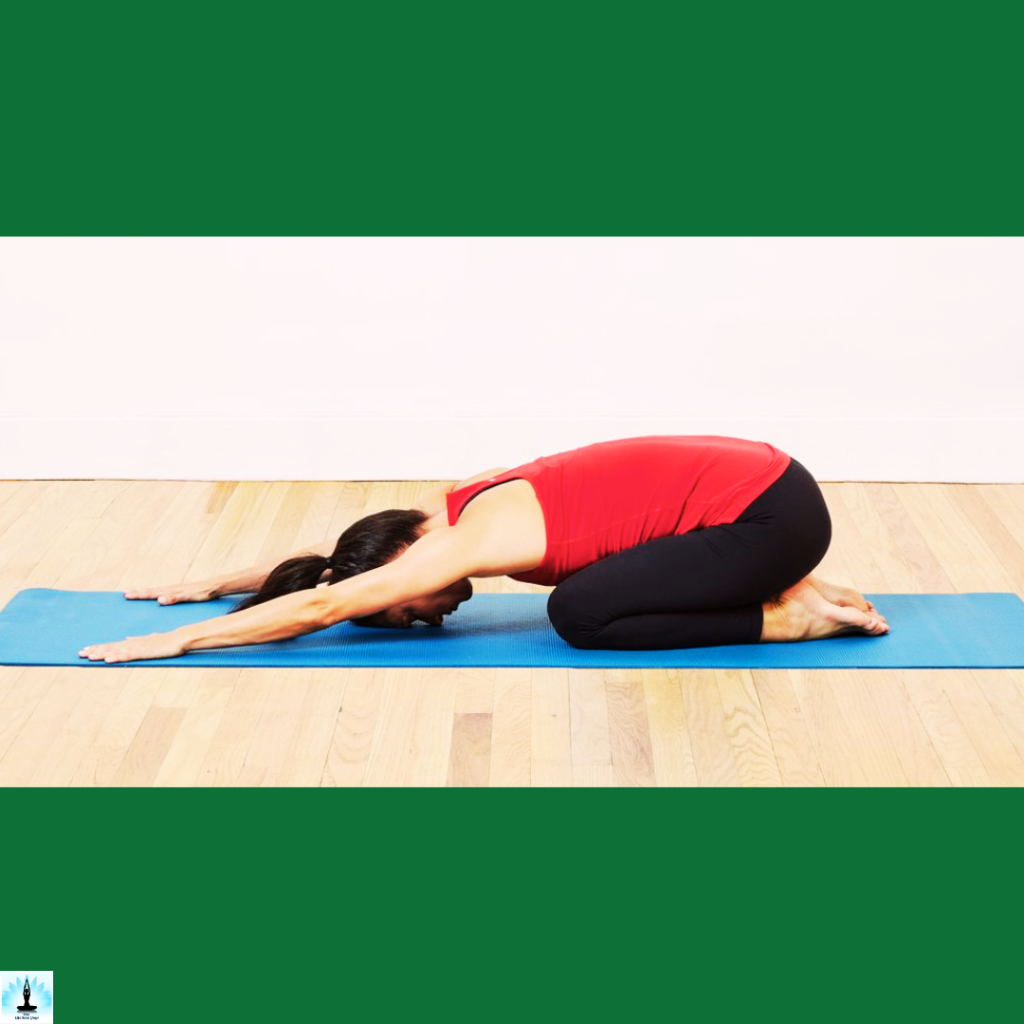
Kneel on the floor, sit back on your heels, and extend your arms forward while lowering your forehead to the ground. Allow your neck to relax. Hold for 30 seconds to 1 minute.
Supported Fish Pose
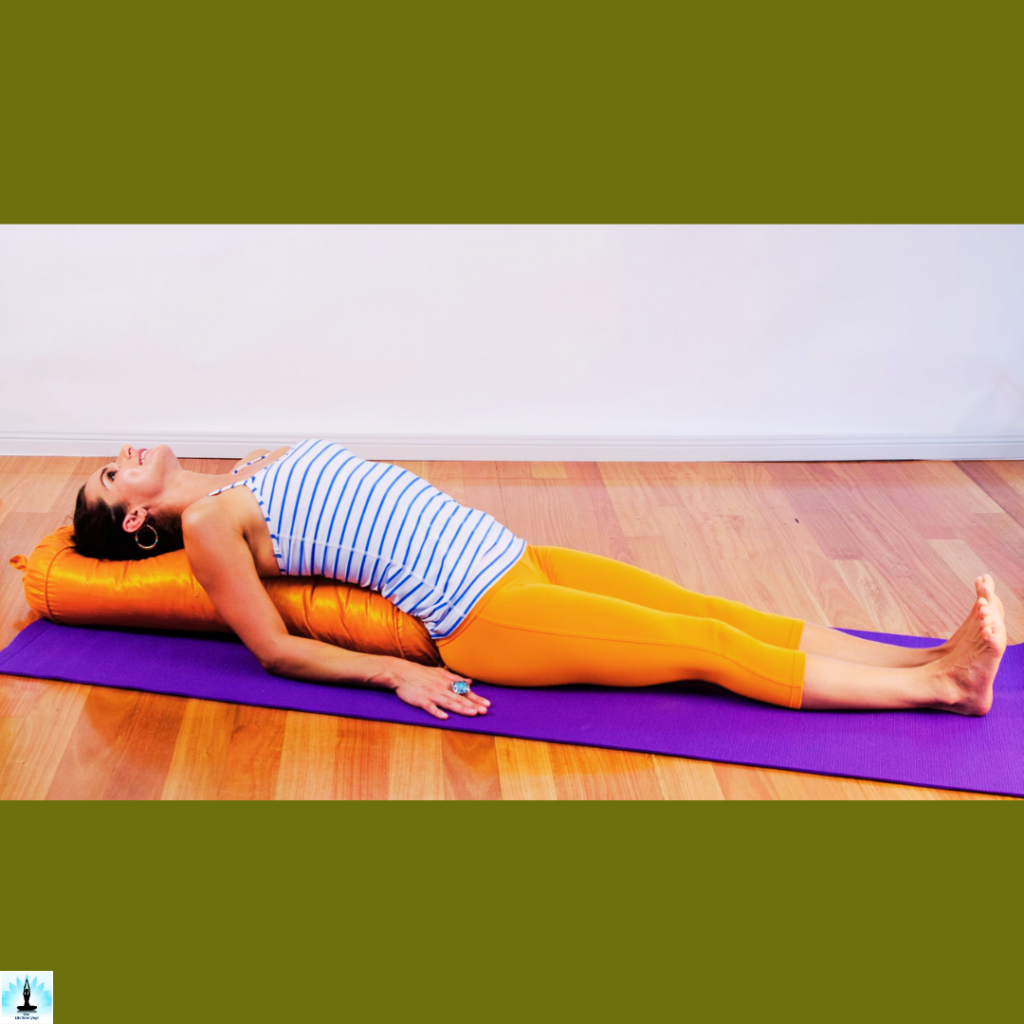
Place a cushion or folded blanket under your upper back and lie down, allowing your head and neck to hang slightly off the support. Relax your arms by your sides. Hold for 1-2 minutes.
Thread the Needle Pose
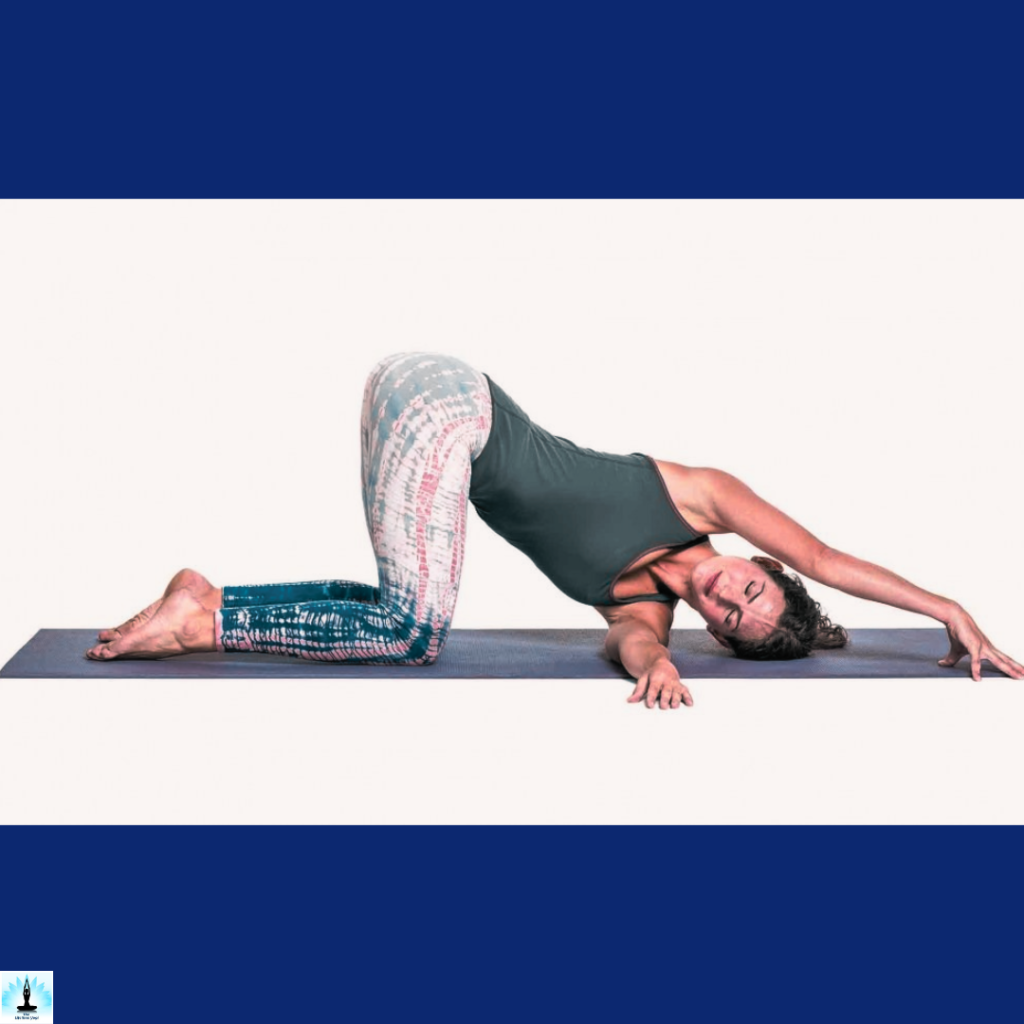
Start on your hands and knees, then slide your right arm under your left arm, lowering your right shoulder to the ground. Gently twist your upper body and rest your head on the floor. Hold for 30 seconds on each side.
Seated Neck Release
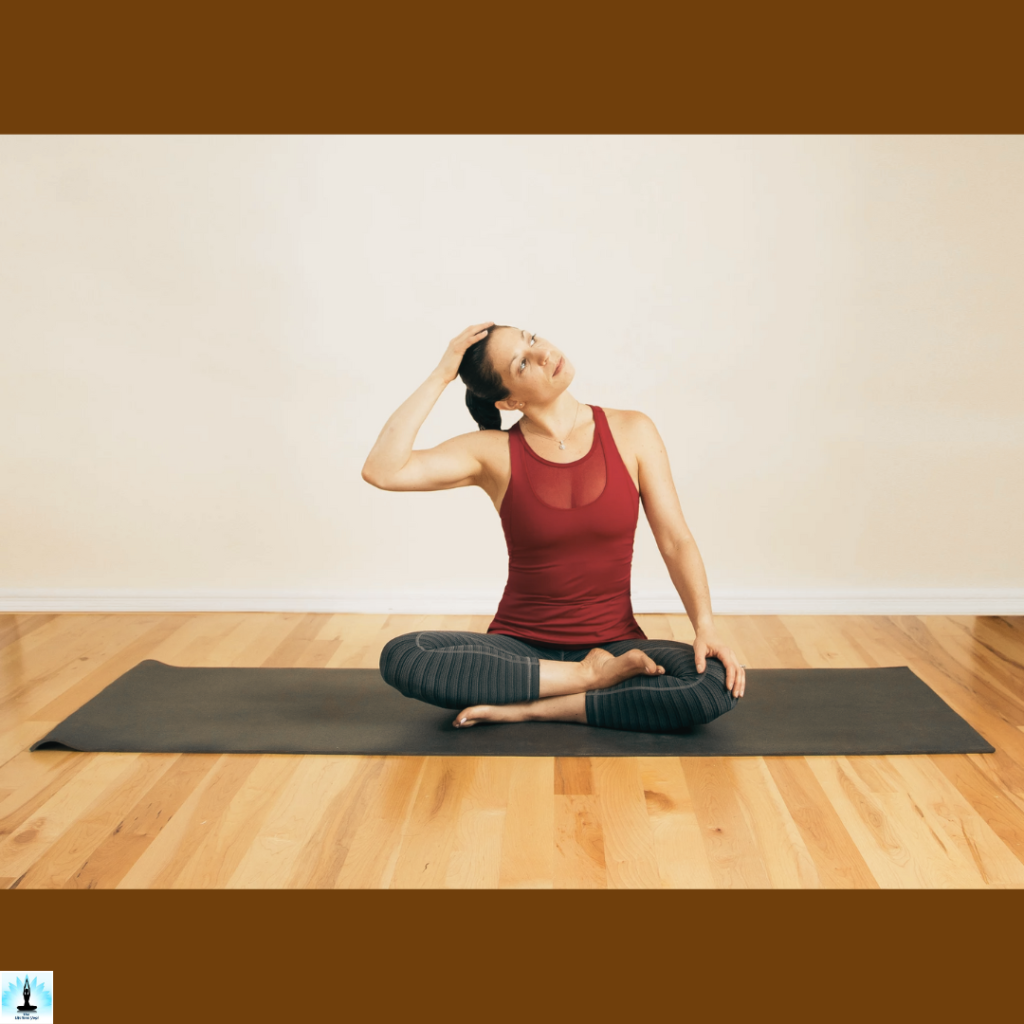
Sit comfortably and extend your right arm down by your side. Gently tilt your head to the left, bringing your left ear towards your shoulder. Place your left hand on your head for a deeper stretch. Hold for 15-20 seconds on each side.
Shoulder Rolls
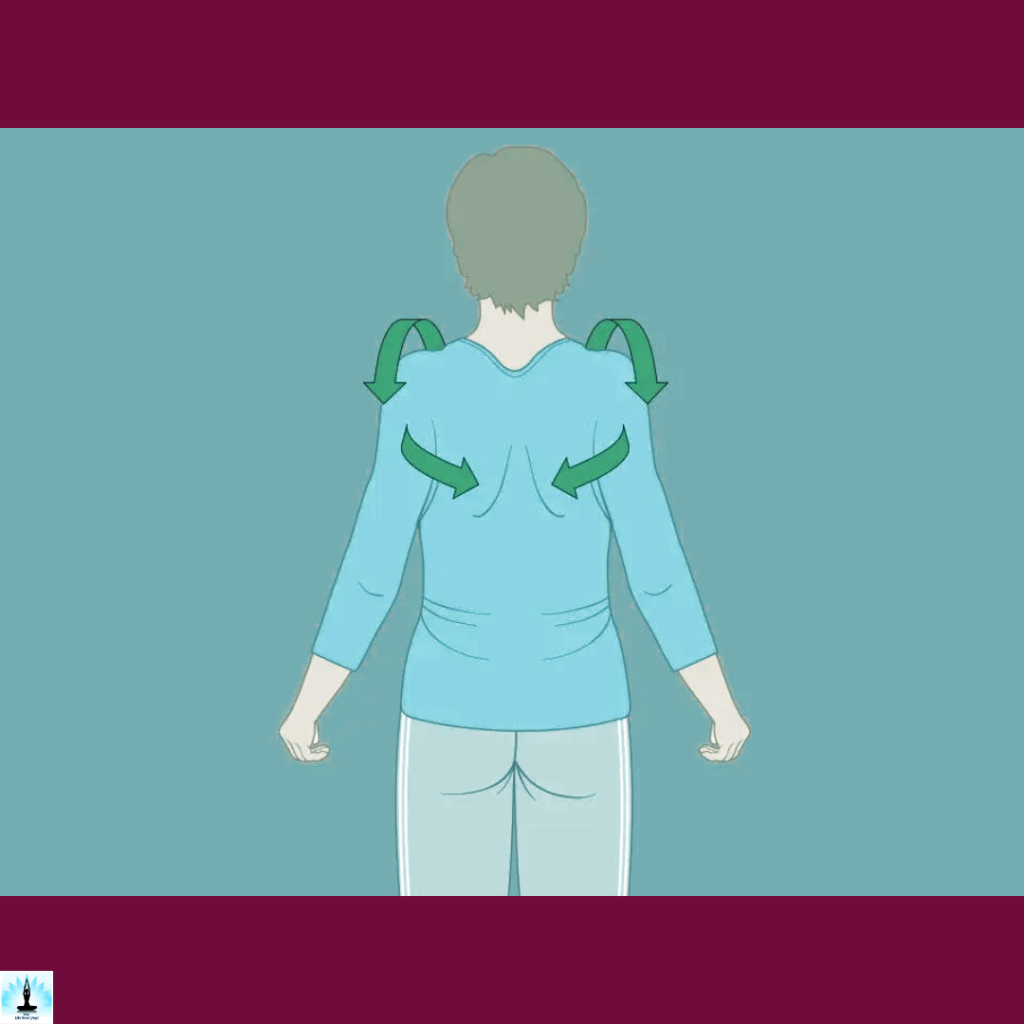
Sit or stand up straight and roll your shoulders in a circular motion, both forward and backward. This helps release tension in the neck and upper back.
What Are The Potential Of Yoga Props For Cervical Spondylosis
One valuable aspect of yoga practice, particularly for individuals dealing with this condition, is the strategic use of yoga props. These supportive aids can enhance safety, comfort, and effectiveness during yoga sessions, catering specifically to the unique needs of those with cervical spondylosis.
Yoga Blocks

These versatile props can be utilized to modify poses and provide additional support. For individuals with cervical spondylosis, placing a block under the hands in poses like Downward-Facing Dog or Triangle Pose can reduce strain on the neck by elevating the upper body.
Bolsters

Bolsters offer gentle elevation and cushioning, making them ideal for restorative poses. Placing a bolster under the shoulders and upper back in Supported Bridge Pose can help release tension in the neck area while promoting relaxation.
Blankets

Folded blankets can be strategically placed to provide comfortable support. In poses like Child’s Pose or Hero Pose, placing a blanket between the hips and heels can help maintain proper alignment, reducing strain on the neck.
Straps

Straps can be used to extend reach and facilitate safer alignment. For example, in seated forward bends, a strap looped around the feet can help individuals with limited flexibility maintain an elongated spine without straining the neck.
Wall Support

Practicing poses against a wall provides stability and support. Wall-assisted poses like standing backbends or inversions can be tailored to offer cervical spine relief.
Cushions/Pillows

Placing cushions or pillows under the head and neck during supine poses can create a comfortable and safe environment for relaxation and gentle stretches.
Embracing mindfulness and relaxation
In the journey towards managing and finding relief from cervical spondylosis, the practice of mindfulness and relaxation emerges as a beacon of solace. Amidst the complexities of modern life and the challenges posed by this condition, cultivating a mindful approach and prioritizing relaxation can significantly contribute to well-being and healing.
The Power of Mindfulness:
Mindfulness, the art of being fully present in the moment, offers a transformative perspective for those grappling with cervical spondylosis. By directing our awareness to the sensations, thoughts, and emotions arising within our bodies, we create a space for understanding and acceptance.
This awareness, free from judgment, allows us to make conscious choices that support our neck health.
In the context of cervical spondylosis, mindfulness can help us tune into the signals our body provides. We become attuned to postural habits that may exacerbate discomfort, enabling us to make timely adjustments.
Mindful movement and gentle stretches become an opportunity to explore our body’s limitations and capabilities, fostering a sense of empowerment.
The Art of Relaxation:
Relaxation, both of the body and the mind, is a crucial element in the holistic approach to cervical spondylosis. As tension in the neck and upper body accumulates, it contributes to discomfort and reduced mobility. Engaging in relaxation practices not only offers relief but also supports the body’s natural healing processes.
Progressive Muscle Relaxation, a technique involving the sequential tensing and releasing of muscle groups, can be particularly beneficial. By consciously relaxing the muscles around the neck and shoulders, we encourage the release of tension and encourage a sense of lightness.
Guided imagery and visualization are also powerful tools. Envisioning a soothing, healing light washing over the neck and spine can promote relaxation and provide a mental escape from discomfort.
Inspiring Stories from The Yoga Community: Celebrating Progress and Reclaiming Movement
In the vibrant tapestry of the yoga community, stories abound of individuals who have embarked on remarkable journeys of transformation, resilience, and empowerment. These stories serve as beacons of hope, reminding us of the profound impact that yoga can have on reclaiming movement and celebrating progress, even in the face of challenges.
Grace’s Triumph Over Injury:
Grace, an avid yogi, faced a daunting setback when a car accident left her with a severe neck injury. Cervical spondylosis threatened to confine her to a life of limited mobility and discomfort. However, Grace’s unwavering spirit led her to the path of yoga. Through guided practice and mindful adaptation, she gradually regained strength and flexibility in her neck.
Jake’s Journey of Mind-Body Harmony:
Jake, a dedicated yoga practitioner, had always viewed his body as a vessel of strength. Yet, a diagnosis of cervical spondylosis challenged his perception and tested his resolve. Undeterred, Jake approached his condition as an opportunity for deeper self-understanding. Through the practice of mindfulness and the guidance of experienced instructors, he learned to listen to his body’s signals, embracing modifications and pacing himself.
Lila’s Liberation Through Adaptation:
Lila, a passionate yoga teacher, found herself navigating the challenges of cervical spondylosis. Faced with the prospect of altering her practice, Lila embarked on a journey of creative adaptation. She reimagined traditional poses, incorporating props and mindful modifications to suit her needs.
These inspiring stories from the yoga community illuminate the profound impact of embracing yoga’s wisdom in the face of cervical spondylosis. They remind us that progress is not solely measured in physical achievements but in the spirit of determination, the cultivation of mindfulness, and the celebration of each small step forward.
Tips And Tricks to Make Your Practice Joyful and Effective for Cervical Spondylosis
Navigating the path of yoga with cervical spondylosis requires a thoughtful and tailored approach. By infusing your practice with joy and effectiveness, you can not only manage your condition but also experience a deeper connection to your body and well-being. Here are some valuable tips and tricks to guide your journey:
Mindful Awareness
Begin each practice with a moment of mindful awareness. Take a few moments to tune into your body, acknowledging any areas of discomfort or tension. This self-awareness will guide you in selecting poses and modifications that suit your needs.
Gentle Warm-Up
Prioritize a gentle warm-up to prepare your body for movement. Start with neck and shoulder rolls, allowing the muscles to gradually release tension. Incorporate deep, mindful breathing to ease into the practice.
Supportive Props
Integrate yoga props, such as blocks, bolsters, and blankets, to enhance comfort and safety. Props can provide valuable support during poses and help you maintain proper alignment, reducing strain on the cervical spine.
Focused Poses
Choose poses that target neck mobility and strength. Incorporate gentle stretches like Neck Tilts, Chin-to-Chest Stretches, and Seated Neck Releases. Focus on maintaining proper alignment and avoid overexertion.
Modify and Adapt
Don’t hesitate to modify poses to suit your needs. For instance, practice Downward-Facing Dog with your hands on a raised surface or perform standing poses with the support of a chair. Listen to your body and adapt as necessary.
Restorative Poses
Embrace restorative yoga as a way to promote relaxation and healing. Poses, like Supported Fish Pose and Child’s Pose with props, provide gentle release and support for the neck.
Mindful Movement
Slow down your practice and emphasize mindful movement. Pay close attention to your body’s signals and avoid pushing yourself into discomfort. Smooth, deliberate motions allow you to explore your range of motion without strain.
Breath Awareness
Infuse your practice with conscious breath awareness. Connect your breath to each movement, allowing it to guide you through poses. Deep, rhythmic breathing can help reduce tension and enhance relaxation.
Positive Affirmations
Integrate positive affirmations into your practice. Repeat affirmations that resonate with you, promoting self-compassion and a positive mindset. This can contribute to a joyful and empowering practice.
Regularity and Patience
Consistency is key. Establish a regular practice routine that honors your body’s needs. Progress may be gradual, but with patience and dedication, you can experience significant improvements over time.
Professional Guidance
Seek guidance from experienced yoga instructors who have knowledge of working with cervical spondylosis. Their expertise will ensure that your practice is safe and aligned with your condition.
Conclusion: Embracing a pain-free future with yoga for cervical spondylosis
In the tapestry of our wellness journey, the threads of mindfulness, movement, and empowerment interweave to craft a narrative of hope and transformation. Through the lens of yoga, we have explored the avenues of gentle stretches, soothing postures, and mindful awareness, uncovering a path toward a pain-free future for those touched by cervical spondylosis.
As we take a final reflective pause, it becomes evident that the practice of yoga is not just a series of poses, but a profound invitation to reclaim agency over our bodies and lives. The stories of triumph, adaptation, and resilience within the yoga community serve as beacons of inspiration, illuminating the potential for progress and healing, no matter the challenges we face.
